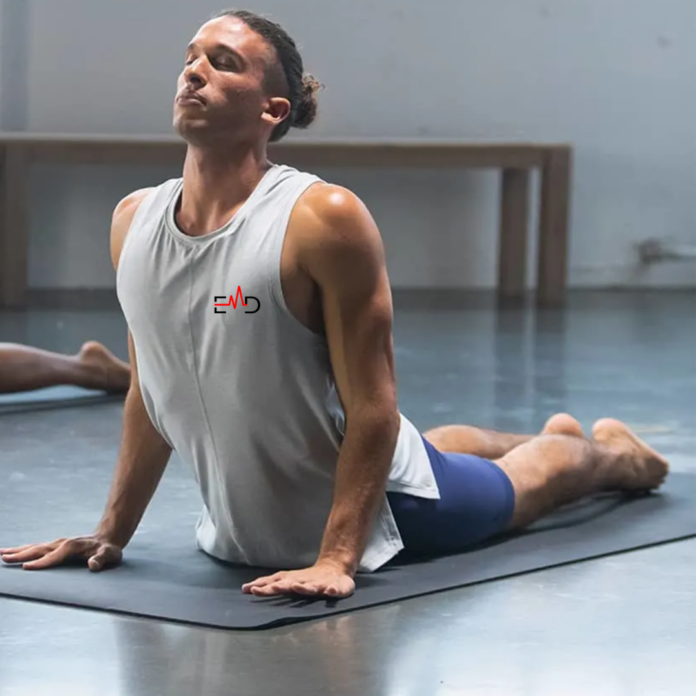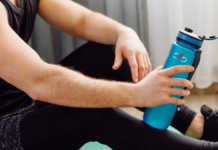Table of Contents
Exercise Daily – Yoga is not just about finding inner peace and flexibility; it can also be a powerful tool for building stronger muscles and achieving a more toned body. In this article, we’ll explore how yoga can help you transform your physique, increase your muscle strength, and sculpt your body into the desired shape. Let’s dive into yoga and discover its incredible benefits for physical fitness.
1. The Power of Yoga
Yoga, an age-old tradition-based practice, has transcended time and cultures to become a powerful tool for enhancing physical and mental well-being.
i. A Holistic Approach to Wellness
Yoga is not merely a series of physical postures; it’s a holistic approach to wellness that encompasses the body, mind, and spirit. By engaging in yoga, individuals embark on a journey toward self-discovery and self-improvement, tapping into a wellspring of vitality that goes beyond the confines of traditional exercise routines.
ii. Physical Strength and Flexibility
One of the most captivating aspects of yoga is its ability to enhance physical strength and flexibility. Through a carefully tailored sequence of poses, yoga enthusiasts can effortlessly cultivate muscle tone, increase joint mobility, and improve overall physical performance.
iii. Mental Clarity and Focus
Yoga is an essential tool for nurturing mental clarity and focus in an increasingly hectic world. Its meditative components invite practitioners to delve into inner calm, allowing them to effortlessly reduce stress, improve concentration, and elevate their cognitive abilities.
iv. Stress Reduction and Relaxation
In the hustle and bustle of modern life, stress can take a toll on our bodies and minds. Yoga provides a tailored solution for effortlessly unwinding and indulging in much-needed relaxation. It unveils a realm of tranquillity essential for maintaining mental and emotional equilibrium.
v. Breathing Techniques for Vitality
Central to the practice of yoga are its breathing techniques. By mastering the art of breath control, individuals can embark on a journey to elevate their respiratory health and vitality. Effortlessly harnessing the power of the breath can lead to a more energized and fulfilling life.
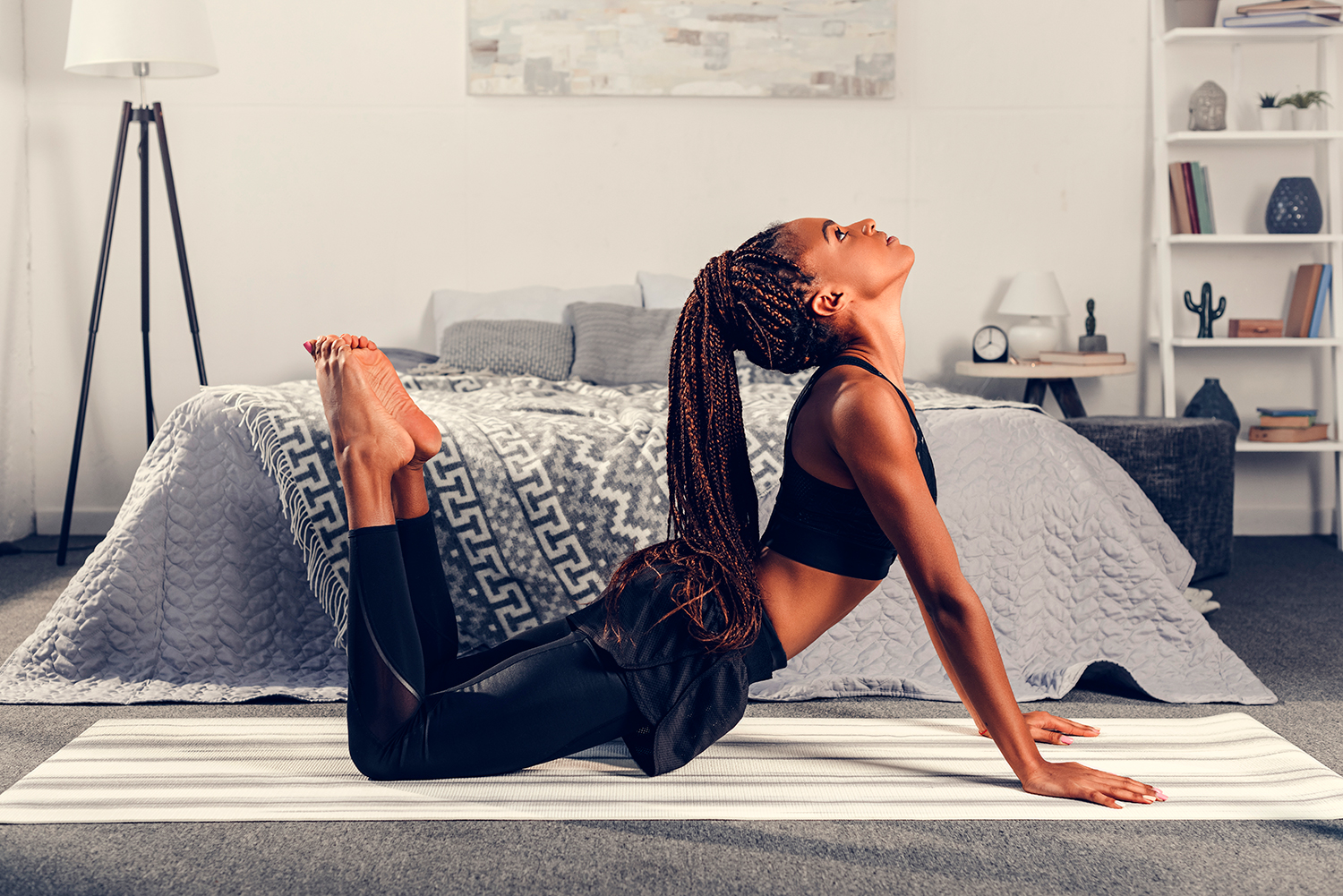
2. Yoga for Muscle Engagement
When we think of yoga, images of serenity and relaxation often come to mind. While yoga offers a path to inner peace, it’s important to unveil the realm of yoga that engages muscles and contributes to physical strength.
i. Activating Muscles with Precision
Yoga is not just about stretching; it’s about engaging muscles precisely. Each pose requires a specific set of muscles to be effortlessly activated, increasing strength and toning.
ii. Discovering Hidden Strength
One of the captivating aspects of yoga is its ability to uncover hidden strengths. However, as you delve into your practice, you’ll unveil muscles you never knew existed. It’s a journey of self-discovery and empowerment.
iii. Core Strengthening
Yoga places a strong emphasis on core engagement. Poses like Plank, Boat, and Dolphin effortlessly work on your core muscles, improving posture, balance, and a sculpted midsection.
iv. Arm Balances and Upper Body Strength
Arm balance poses like Crow and Side Plank are yoga’s secret weapons for building upper body strength. Through consistent practice, you can effortlessly elevate your arm and shoulder muscles.
v. Lower Body Power
Yoga doesn’t neglect the lower body. Poses like the Warrior series and Chair pose work on your legs, glutes, and thighs, providing a full lower body workout that results in beautifully toned legs.
vi. Isometric Contractions
Yoga’s isometric contractions are a unique form of resistance training. However, when you hold poses, you effortlessly engage muscles, creating strength without needing external weights or equipment.
vii. Balance and Stability
Many yoga poses require a delicate balance, engaging muscles to maintain stability. This not only tones your muscles but also improves your overall balance and coordination.
viii. Flexibility and Strength
Yoga combines flexibility with strength. Unlike traditional strength training that can lead to muscle bulk, yoga cultivates lean and toned muscles, resulting in a harmonious balance between flexibility and strength.
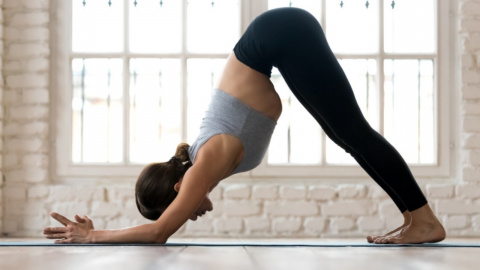
3. Building Functional Strength
Regarding fitness, strength is not just about lifting heavy weights. It’s about having the functional strength to perform daily tasks and live life to the fullest effortlessly.
i. The Essence of Functional Strength
Functional strength is about more than just aesthetics; it’s about effortlessly carrying out everyday activities with grace and ease. Yoga equips you with the strength to move, lift, and perform daily tasks efficiently.
ii. Engaging Multiple Muscle Groups
Yoga is not limited to isolated muscle workouts. It engages multiple muscle groups simultaneously, mimicking the real-life movements and actions you encounter in your daily routine.
iii. Posture and Balance
One of the captivating aspects of yoga is its emphasis on posture and balance. By building a strong core and improving balance, you effortlessly prevent common issues like back pain and injuries, contributing to overall functional strength.
iv. Lifting and Carrying Effortlessly
Yoga thoughtfully incorporates poses like the Chair pose and Warrior sequences, skillfully mirroring lifting and carrying actions. This strategic approach effectively prepares your muscles to handle real-life situations with both ease and efficiency.
v. Functional Flexibility
Functional strength isn’t just about power; it’s also about flexibility. Yoga’s emphasis on flexibility ensures that your muscles and joints effortlessly move through their full range of motion.
vi. Everyday Movement Patterns
Yoga seamlessly integrates everyday movement patterns into its practice. Firstly, It’s noteworthy how yoga poses, ranging from bending to reaching, skillfully replicate the actions you commonly perform daily. This mimicry results in those movements feeling remarkably effortless and natural.
vii. Core Strength for Stability
A robust core serves as the cornerstone of functional strength. Furthermore, yoga’s core-engaging poses, such as the Boat pose and Plank, seamlessly aid in constructing a solid core. This, in turn, enhances stability in all your movements, underscoring the importance of core strength.
viii. Functional Training Without Weights
Unlike traditional strength training that often relies on weights and machines, yoga provides functional training that requires no equipment. You effortlessly use your body weight to build strength and endurance.
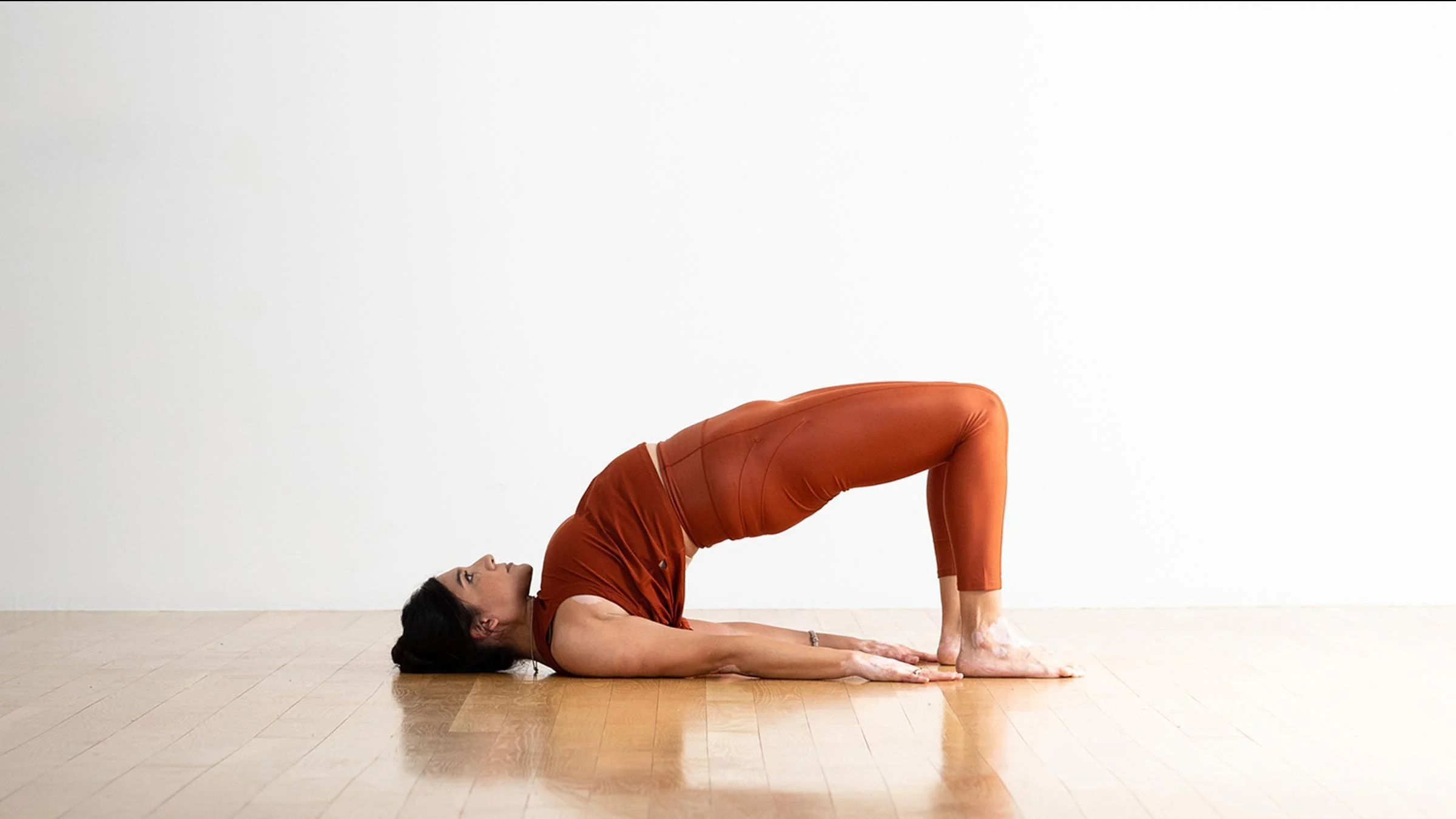
4. The Core Connection
Your core is not just about having a flat stomach or defined abs; it’s the powerhouse of your body, providing stability and strength for all movements.
i. The Core’s Vital Role
Your core muscles, including the abdominals, obliques, and lower back, are essential for maintaining proper posture, balance, and stability. Moreover, yoga expertly unveils the crucial role of the core in every pose and movement, shedding light on its significance.
ii. Core Engagement in Every Pose
Yoga naturally places a strong emphasis on core engagement in every pose. Whether you’re in Downward Dog or striking a Tree pose, you’ll uncover the pivotal role a strong core plays in maintaining balance and executing graceful transitions.
iii. Effortless Posture Improvement
A strong core effortlessly supports an upright posture. As you engage your core muscles in yoga, you’ll notice an effortless improvement in your alignment and posture, both on and off the mat.
iv. The Role of Breath Control
Yoga seamlessly integrates breath control with core engagement. Proper breathing techniques effortlessly activate and strengthen your core muscles while enhancing your lung capacity.
v. Improved Balance and Stability
A robust core serves as the cornerstone for balance and stability. Through yoga’s core-focused poses, such as Boat pose and Plank, you can effortlessly take on challenges that strengthen your core, ultimately enhancing your stability across various activities.
vi. Lower Back Support
Yoga places significant emphasis on the lower back, an area of discomfort for many. By engaging the core, you can effortlessly support the lower back, reducing the risk of pain and injury.
vii. Developing Core Strength
Yoga offers a gentle yet highly effective approach to cultivating core strength. Firstly, by Transitioning from gentle movements to mastering more advanced poses, you’ll progressively and seamlessly develop a strong core over time.
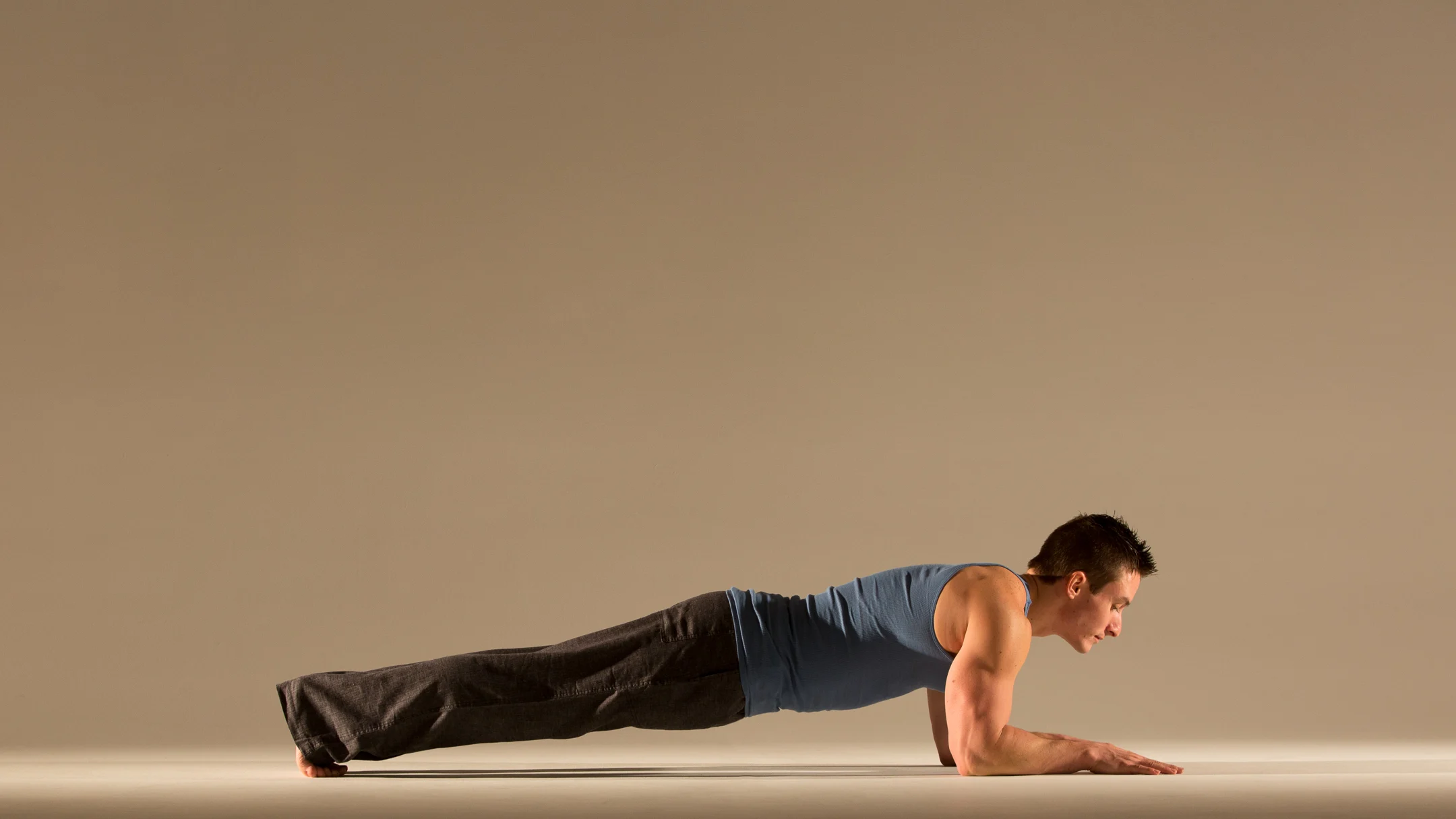
5. Yoga for Lean Muscle Mass
If you’re looking to build lean muscle mass without bulking up, yoga is an excellent choice. It helps you develop long, lean muscles while increasing your flexibility. This combination creates a sculpted and toned appearance that many people desire.
6. Balance and Coordination
Yoga presents a compelling challenge to balance and coordination, two vital facets of physical fitness. While you advance in your practice, you’ll observe remarkable enhancements in your balance and coordination skills, rendering you more agile and less susceptible to injuries.
7. Targeted Muscle Groups
Different yoga poses target specific muscle groups. For example, Warrior poses strengthen your legs, while Plank poses work on your upper body. By incorporating a variety of poses into your practice, you can target and tone the areas of your body that matter most to you.
8. Resistance Training with Yoga
Yoga can offer a unique form of resistance training via isometric contractions. When you hold poses and flow through sequences, it demands muscular effort akin to the experience of lifting weights. This distinctive resistance training component of yoga contributes significantly to developing strength and endurance.
9. Sculpting Your Body
With consistent yoga practice, you can sculpt your body into your desired shape. Whether you want defined arms, toned legs, or a flat stomach, there are yoga poses and sequences designed to help you achieve your goals.
10. Combining Yoga with Other Workouts
Yoga can be a fantastic complement to other forms of exercise, such as cardio and weightlifting. It helps improve flexibility and mobility, enhancing your performance in other activities while preventing injuries.
11. Mind-Body Connection
Yoga is not solely focused on the physical aspect; it also emphasizes the strengthening of the mind-body connection. Consequently, this heightened mental focus and awareness can seamlessly translate into improved control over your muscles and movements, resulting in more effective workouts.
12. Yoga for All Fitness Levels
Yoga is accessible to individuals of all fitness levels. Whether you’re a beginner or an experienced athlete, there are yoga practices tailored to your needs. You can start at your own pace and gradually increase the intensity.
13. Consistency is Key
To see the yoga best results in terms of muscle strength and body tone, consistency is essential. Regular yoga practice, even if it’s just a few times a week, can lead to significant improvements in your physique.
14. Nutrition and Yoga
Pairing a balanced diet with your yoga practice can further enhance your results. Proper nutrition provides your body with the fuel it needs to build and repair muscles effectively.

Conclusion
Yoga is not only a path to inner peace but also a powerful tool for building stronger muscles and achieving a more toned body. By engaging various muscle groups, improving core strength, and targeting specific areas, yoga can help you sculpt the physique you desire. Whether you’re a yoga enthusiast or new to the practice, incorporating yoga into your fitness routine can yield remarkable results.
FAQs – Yoga for Stronger Muscles and a More Toned Body
Q: Can I build significant muscle mass with yoga alone?
While yoga can help you build lean muscle and improve strength, it may not lead to significant muscle mass gain. Combining yoga with resistance training and a balanced diet can yield better results.
Q: How often should I practice yoga for visible muscle toning?
To see visible muscle toning, aim for at least 3-4 yoga sessions per week. Consistency is key to achieving and maintaining your desired physique.
Q: Are there specific yoga poses for toning certain body parts?
Yes, there are yoga poses that target specific body parts. For example, Plank poses work on the core, while Downward Dog can help tone the arms and shoulders.
Q: Can beginners start with advanced yoga poses for muscle toning?
It’s advisable for beginners to start with basic poses and gradually progress to more advanced ones. This ensures proper form and reduces the risk of injury.
Q: Is yoga suitable for all age groups?
Yes, yoga is suitable for people of all age groups. There are modified poses and practices available to accommodate varying fitness levels and age-related considerations.


